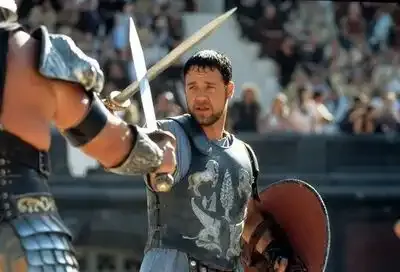

A multi-award-winning blockbuster and a cultural phenomenon, Gladiator (2000) cemented Russell Crowe's place among cinema's leading men.
With grand battle scenes, emotional plotlines and a powerful score, the film earned five Academy Awards, including Best Picture and Best Actor for Crowe. But behind its thunderous success lies one of the most dramatic and complicated productions of the early 2000s.
One of the film's most memorable performances - that of the Roman slave-trader Proximo, played by British actor Oliver Reed - was completed after the actor had already passed away.
The production was already halfway through shooting when Reed suffered a fatal heart attack in May 1999, aged 61, in Valletta, Malta - and, att the time, he had just wrapped several major scenes and was due to film more in the coming weeks.
Reed's sudden passing left director Ridley Scott and the production team with an impossible dilemma: His character was integral to the plot, particularly in Maximus's arc from enslaved fighter to celebrated champion of the Colosseum.
Removing him entirely would have upended the story, and recasting was not an option so deep into filming. The solution was groundbreaking for the time - and far from simple.
Instead of cutting around his character, Scott opted to digitally recreate Reed for his remaining scenes. This decision meant creating one of the earliest uses of digital body doubles and CGI for a major role in a Hollywood film.
A stand-in actor was brought in, and visual effects artists used previously shot footage, facial scans, and digital manipulation to create a likeness of Reed.